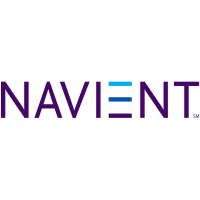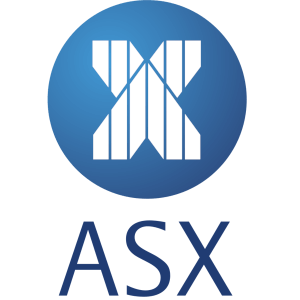
SouthState Corp
NASDAQ:SSB

Earnings Call Analysis
 Q3-2023 Analysis
SouthState Corp
Q3-2023 Analysis
SouthState Corp
As an investor, you'll be interested to know that the company expects its deposit cost to increase in the upcoming quarter, albeit the current deposit beta, which indicates the percentage of deposit costs changes compared to changes in market interest rates, stands at 27%. They anticipate the deposit costs to rise between 15 to 20 basis points going into the fourth quarter. Furthermore, they predict the Net Interest Margin (NIM) to bottom out in the fourth quarter, possibly 5 basis points lower than the previous quarter, with an estimated range of 3.45% to 3.50%. Looking ahead into 2024, with the assumptions based on Moody's forecast and the company's growth expectations, the NIM is projected to stabilize within the 3.50% to 3.60% range. This stability draws largely from the repricing of approximately $1 billion in loans per quarter, which could result in yield increases around 300 basis points, with loan yields expected to be in the 4.25% to 4.5% range.
In terms of operational costs, the company is focusing on a controlled approach to expense growth despite the ongoing planning and budgeting uncertainties. They aim to keep the expense growth within the low-to-mid single-digit range, indicating they are still in the process of finalizing their strategic planning.
Investors should note that although loan production pipelines are trending downwards, mainly due to tighter liquidity and a more cautious borrowing and lending environment, loan growth may continue in the mid-single digits. This is because loan payoffs have significantly slowed down, creating a disconnect between pipeline trends and loan growth. Additionally, the company reported that in the third quarter, their new loan production yield was approximately 740, reflecting a rising yield environment. They acknowledge certain areas, such as small-business loans and the assisted-living sector, face more pressure and therefore are areas of focus for cautious credit strategies.























 You don't have any saved screeners yet
You don't have any saved screeners yet

Good morning. My name is Audra, and I will be your conference operator today. At this time, I would like to welcome everyone to the SouthState Corporation Q3 2023 Earnings Conference Call. [Operator Instructions]At this time, I would like to turn the conference over to Will Matthews, Chief Financial Officer. Please go ahead.
Good morning, and welcome to SouthState's Third Quarter 2023 Earnings Call. This is Will Matthews. I'm here with John Corbett, Steve Young and Jeremy Lucas. John and I will make some brief prepared remarks, and then we'll open it up for questions. As always, a copy of our earnings release and presentation slides are on our Investor Relations website.Before we begin our remarks, I want to remind you that comments we make may include forward-looking statements within the meaning of the federal securities laws and regulations. Any such forward-looking statements we may make are subject to the safe harbor rules. Please review the forward-looking disclaimer and safe harbor language in the press release and presentation for more information about our forward-looking statements and risks and uncertainties which may affect us.Now I'll turn the call over to John Corbett, our CEO.
Thank you, Will. Good morning, everybody. Thanks for joining us. In the earnings release last night, you can see that SouthState delivered a solid quarter that was right in line with our previous guidance. Will can cover the details, but high level, we continue to see steady growth in loans and customer deposits. Liquidity is stable, capital ratios are growing, deposit funding is best-in-class, and our net interest margin is settling in at a pretty good spot.One of the core values that we continually preach to our team is to keep our eye on the long-term horizon. So we spent a lot of time talking about the big picture, talking about the economic cycle and where we have risks and where we have advantages. The stages of a banking cycle are simple and predictable. The cycle risks move from liquidity, then to earnings, then to credit and then finally to capital. But while the stages are easy to predict, predicting the speed and the severity of the cycle, that's the tough part.Since March, we've clearly moved through the first phase, the liquidity tightening phase, as deposits left the banking system for money market funds. Now the predictable and necessary response is that the industry trades away future earnings power as deposit costs rise. Now for SouthState, our granular deposit base has served as a ballast for our franchise, and we've been able to continue to grow our deposits with a cumulative deposit beta of only 27% and a total cost of deposits of 1.44% for the quarter.Now over on the asset side, we're also about to benefit from a tailwind of loan repricing. 70% of our loans are based on a fixed or adjustable rate. So we're going to see a significant portion of our loan portfolio repriced by more than 300 basis points as they renew, and that should help offset any additional drift in deposit costs. It feels like the velocity of change for deposits is moderating, and we're now shifting to the credit risk portion of the cycle. In the last year, we've set aside $151 million in reserves, with only $18 million in charge-offs. And as a result, we've built our reserves up by 28 basis points to 1.59%.Now the cycle is more severe than many are predicting. Those reserves, plus our excess capital, will allow SouthState to be opportunistic on the back side of the cycle, where the opportunities to create shareholder value are the greatest. So we're cautious now. The lag effects of the rapid rise in rates are only just beginning to work their way through the system. But at the same time, we're excited. We think that there's a tremendous opportunity on the horizon for a bank of our size, in our geography and with our deposit franchise. So I want to close by thanking our team for keeping their eye on the long-term horizon and building a franchise that can weather the storm and come out stronger on the other side.And I'll pass it back to Will now to provide some color on the quarter.
Thank you, John. We had another solid quarter with deposit costs, margin and noninterest income ending up in line with our expectations. Solid PPNR and good credit costs outside of the one sizable charge-off that impacted us and some of our peers. I'll touch on a few details before we move on to Q&A.On the balance sheet, our 6% annualized loan growth moderated from the first half of the year, in line with our expectations. Deposits grew at a 2% annualized rate or 4% if you exclude the approximately $130 million in brokered CD maturities, we allowed to run off without replacing. Though we continue to see a mix shift in our deposits from DDA into money market accounts, the pace of the DDA shift moderated a bit this quarter. DDAs represented 30% of total deposits at quarter end, down from 31% last quarter. And as we mentioned previously, this figure was 28% to 29% before the pandemic. So it continues to appear as if we're moving towards those pre-pandemic levels or DDA as a percentage of deposits.Turning to the income statement. Our 3.50% NIM was down 12 basis points from Q2. Loan yields were up 14 basis points, but deposits were up 33 basis points, which was in line with our 30 to 35 basis point guidance, bringing our cycle-to-date deposit beta to 27%. Our net interest income of $355 million was down $7 million from Q2 on 1 more day. Noninterest income of $73 million was down $4 million from Q2, though still a solid quarter. Correspondent revenue was $13 million after $12 million in interest expense on swap collateral for $25 million in gross revenue, down approximately $3 million from Q2. Wealth had another solid quarter, but mortgage revenue of $2.5 million was down $1.9 million from Q2. We had another good quarter in deposit fees similar to Q2.Expenses came in a bit lower than expected this quarter, largely due to a revaluation of SERP retirement plan liabilities due to higher interest rates, reducing NIE by $5.9 million. We also made a $1 million donation during the quarter, for which we received a dollar for dollar tax credit. So NIE was higher by $1 million in the quarter and income tax was lower by the same amount. Excluding that, NIE was in line with our expectations. Looking ahead, we expect NIE for Q4 in the mid-240s range subject to the normal variations in expense categories impacted by noninterest income and performance.With respect to credit, we recognized the $13 million in net charge-offs in the quarter, bringing our year-to-date total to $17.5 million or 8 basis points annualized year-to-date. The one sizable SNC loan charge-off that received a lot of attention earlier in the quarter, accounted for all of the loan net charge-offs as we experienced net loan recoveries before overdraft losses absent that credit, both for the quarter and year-to-date. We continue to build loan loss reserves with a $33 million provision, bringing the total reserve to 159 basis points of loans.For overall asset quality trends, NPAs were down slightly, past dues were flat, substandard loans increased and special mention loans declined. Line utilization continues to be flat, except on construction lines as we're not originating many new construction loans and existing projects move towards completion. We continue to have very strong capital ratios with CE Tier 1 of 11.5% or 9.25% if AOCI were included in the calculation. TCE ended the quarter at 7.5%. With loan growth expectations continuing to moderate, risk-weighted asset growth should be in a range that allows us to continue to grow our regulatory capital ratios and provide us with flexibility.Operator, we'll now take questions.
[Operator Instructions] We'll go first to Stephen Scouten at Piper Sandler.
I was curious if you could talk a little bit about what you're expecting on the NIM side moving forward and deposit trends from a cost perspective. Obviously, it's catching up a little bit, but still extremely strong. So just kind of wondering what you're expecting in the months ahead.
Sure, Stephen. This is Steve. We -- as you know, Page 12 shows kind of a summary of our NIM over the last 4 quarters, and you can see at 3.5% this past quarter, which was within our guidance, and our deposit costs were up 33 basis points this past quarter, which was in that 30 to 35 basis points guidance. So we've so far sort of been where we thought we were. And as we look forward, our guidance is really around 3 things: interest-earning assets, the rate forecast and deposit beta. And really, our interest-earning assets are pretty flat, I would expect going into the fourth quarter.As we think about Moody's consensus forecast, the only change, it really forecast no new rate hikes, but then it has 4 cuts starting in the late second quarter and for the Fed funds rate to end at 4.5% at the end of 2024. And so with all that, our deposit beta, the third component, Page 18 shows our cycle to date deposit beta is 27%. We continue to expect the high 20s total beta by the end of the year. So with that, we would expect deposit costs to increase 15 to 20 basis points in the fourth quarter. And so with all of that, all those assumptions baked together, we'd expect NIM to bottom in the fourth quarter, somewhere in the 5 basis points lower, maybe around 3.45% to 3.50%, somewhere in there.So that's sort of what we're looking for in the fourth quarter. As we look into 2024 based on the Moody's forecast and our growth assumptions, we'd expect interest earning assets to average $41 billion and that our net NIM would stabilize in the 3.50% to 3.60% range, which is really no change to our guidance. If I take a step back thinking about '23 versus '24, it's been such a volatile year relative to rates and NIMs and deposit betas and so on. But it looks like our NIM for the full year '23 will be in the low 3.60s, if in '24 it's in the mid-3.50s, and we'll just have a little bit more growth to offset it. So anyway, those are kind of the ways we're thinking about NIM one quarter out and sort of how we're thinking about it for next year with these assumptions.
Yes, that's helpful. And the stability that's created there, and I know John spoke to this a little bit, is that -- is a lot of that coming from the asset side repricing on that 70% of loans? And have you guys given any detail around the pace of those repricings and kind of when we can kind of ratably see that benefit?
Sure. I think last quarter, we talked about it on the call, but it's roughly about $1 billion a quarter in loan repricings. So what is it, $4 billion a year. And that step up is around 300 basis points or so. And then, of course, we have some securities coming in, that's probably $700 million, $800 million, but we'll likely use that to fund loan growth. So maybe that helps you kind of just frame up. It's about $1 billion a quarter over the next, I don't know, 5, 6 quarters, and it's roughly a 300 basis points pick up. The yields are somewhere in the 4.25% to 4.5% range.
And that's the adjustable and fixed repricings.
Got it. Right. Yes. Understood. Okay. Great. And then I guess, lastly for me, any sort of -- as you think about that Moody's expectation, we start thinking about the presumably some rate cuts, any kind of high-arching balance sheet strategies to protect the NIM when rates presumably do go down? And anything around a potential bond restructuring? I think the ACL is maybe near $816 million here today. So I'm just kind of wondering with the capital build, if that's something you guys are thinking more about?
Well, maybe I'll address NIM strategies, maybe Will or John can address capital and bond restructure. As we think about the NIM moving forward, we had an investor recently asked us if Fed funds went down to 3%, what was your NIM back when Fed funds was 3%? And we did some -- we really didn't remember, but we looked back at it, and it was in the 3.75% to 4% range. So it's just we're waiting for the repricing strategy of all these fixed rate type loans if our deposits paying in.So as we think about -- we'll do things around the margin, around hedging and those kinds of things, that won't be a huge strategy for us. But I think the opportunity will be as rates -- if rates do fall, if we have 4 rate cuts next year, money markets and other types of things on the incremental margin would fall a little bit. and then our fixed rate repricings of our loans would continue to reprice up. And so as we think about the modeling and as we think about NIM, that's why we sort of are guiding in that range.But why don't I turn it over to Will and just maybe talk about bond restructuring and capital.
Yes. Yes, Stephen, I'd say we have flexibility, which we like. We've got a strong capital position. We've got a strong reserve. We've got a good capital formation rate. And that gives us a lot of things to think about with respect to capital deployment. I mean at current price, our stock is pretty attractive. So certainly, repurchases of some degree is on the table. And additionally, with bond portfolio restructure, while we're not likely to engage in a wholesale kitchen sink type thing, there's certainly the ability to nibble around the edges. So we continue to think about all of those options as well as some of the growth opportunities afforded us by terminal markets and the good economy in which we operate. So we like that flexibility.
Fantastic. I appreciate the time.
Thanks, Stephen.
We'll take our next question from Catherine Mealor at KBW.
We've seen a couple of smaller M&A transactions in the Southeast over the past few months. Just curious your updated thoughts on M&A and how you're thinking about how you're positioned there into next year?
Catherine, it's John. Yes, no change from our prior guidance. We've seen a couple of these deals happen, but it's still really, really challenging to get the math to work with the AOCI and the regulatory delay risk. So our assumption is that things are going to pick up probably the back half of 2024 as we get closer to the election and there's more certainty in the economy. Clearly, the logic is there for M&A given the revenue pressures in the industry. And we're just going to stay out on the street visiting peer banks that possibly could be partners in the future, but it's challenging in the short run.
And then just kind of a big picture earnings question as we think about next year, as you look at -- you've got a little bit, let's call it, stabilization in the margin after we kind of come off of fourth quarter. It seems like you still expect for there to be a little bit of balance sheet growth. But as you look at revenue growth as compared to expense growth, how do you think those 2 marry each other in [ 2040 ]? Do you think this is a year where you can still create positive operating leverage? Or do you see this as a year where we'll really kind of see revenue and expense growth kind of be at the same pace or maybe even a little bit more expense growth relative to revenue? Just curious how you're thinking about that into next year.
Well, Catherine, this is Steve. If you could tell us what the yield curve would look like, that'd help. I'm not sure that we know that. But I do think in the immediate environment, our -- as we think about -- we've talked about NIM, if we talk about fee income, that's going to be a bit more challenging, I think, in the next quarter or so just with the 10-year treasury rising, one of the businesses that we're at is the correspondent division. And we see with the 10-year rising some of the swap opportunities probably aren't there, at least in this quarter, and it bounces around from time to time and so on. So I'd imagine that won't eventually come up. But our range of noninterest income to assets, I think this -- if you look back at this quarter, we guided the 55 to 65 basis points. This quarter, we were at 64 basis points. So I'd call it on the high end.If I look forward into the next quarter, I would think we'd be closer to the lower end of that. And then as we think about kind of a full year picture of noninterest income, I would expect -- I think we've been guiding that 55 to 65 basis point range, we'll probably end up in the low 60s basis points to average assets. And as we think about 2024, I'd expect we would probably start a little lower and then end higher as the -- if the Moody's consensus is right and the 10-year treasury goes back towards 4%, we'll start seeing more capital market activity. So kind of the way I think about it, probably won't be a lot of growth in the noninterest income year-over-year, assuming this Moody's rate forecast, and I would expect that based on the NIM forecast we just kind of went through, dollar growth is probably not going to be a lot. So that's the revenue picture. Maybe I'll just talk to the expense picture.
Yes. And so obviously, with that revenue picture, our goal for next year is to be very controlled in our expense growth. And we're still deep in the planning and budgeting process as most people are at this point in the stage, they don't have any precise guidance to give, but we would hope and expect to be in the low to mid-single-digit range on expense growth and try to control it as tightly as we can.
Great. All right. Appreciate it.
All right. Thanks, Catherine.
We'll go next to Michael Rose at Raymond James.
Just wanted to follow up on that last point on expenses. You guys are in a pretty enviable position from a fundamental standpoint. You guys have been very conservative, built reserves. I think that's really well taken from my vantage point. You got capital that's growing. I mean why not be more aggressive on the expense side now while revenues are under pressure so that you better position yourself as you talked about, John, at the outset for what will be brighter days at some point? I know there's a lot of dislocations in the market. I assume there's a lot of good lenders out there that you guys can go after. Why not actually be more aggressive here on the hiring and organic growth front while you have many competitors that are capital and liquidity constrained.
Yes. Okay. When I heard you say be aggressive on the expense front, I wasn't sure whether you were cutting expenses or adding expenses, Michael, but I think you're saying be opportunistic is what you're saying.
Correct. Yes. Yes.
And we would agree with that. And I would tell you that really we're opportunistic all the time. We never stopped recruiting and building the bench strength. I think you know about our management associate program we've had going for years where we bring in 35 college interns every summer. We convert 15 to 20 into management associates every year to build that bench strength from the credit team and on the lending team. We're always out recruiting. Last night, my wife and I had dinner with a prospect, a veteran prospect banker. And so we're out talking to folks all the time. And so we're not going to put a number out there on the expense growth side that would keep us from being opportunistic, if that helps.
It does. No, makes complete sense. Just a few smaller ones. I noticed that the FHLB was essentially paid down, looks like brokered deposits came down a little bit. What other -- I assume brokered deposits will come down as you grow core deposits. What's kind of the right level to think about that? And is there any other tools or actions you can take on the liability side to kind of contain the creep in interest-bearing liability costs.
Michael, it's Steve. You'll remember in March, when we had sort of the banking turmoil, we went ahead and did a brokered CD offering, I think it was $1.2 billion or so. And then we also borrowed $900 million of Federal Home Loan Bank. And that was just sort of an abundance of caution with all the turmoil going on. And what you've seen over the last couple of quarters is, one, we've paid off the $900 million of Federal Home Loan Bank as worries have died down and the brokered CDs are starting to roll off. So we typically -- right now, I think our brokered CDs are around 3% of our deposits, give or take. I could see that coming down a little bit, but I wouldn't -- it wouldn't be an abnormal level for us to be around 3% of broker deposits. It could go lower, but it wouldn't be an unusual event for us to stay, hang out in that general range.
And I would say in echoing comments that I think some of our peers have made in their calls, we're seeing the -- while there's still deposit cost pressure, the rate of change has slowed a bit, and it feels like the heaviest competition in that regard is behind us.
Okay. Great. Maybe just finally for me. Do you have a sense for what the new loan production yield was and maybe what the margin was for September?
Yes. So our new loan production yield for the third quarter was around 7.40%, I think it's a little over that 7.42% on the new funded yield. It is a little higher than that September. I don't think we just have the September margin numbers, but I think it was -- for the most of the quarter, it was not all that far different from our ending quarter, but a few basis points here or there, and the margin moves obviously a few basis points on 30 days versus 31 and so on, but it was reasonably stable in most of the quarter.
All right.
Thanks, Michael.
We'll move next to Dave Bishop at Hovde Group.
I'm curious, circling back to the preamble, you mentioned sort of the life cycle, the banking industry and the paying attention to the credit cycle here, we saw the one-off SNC credit you alluded to in the charge-offs. But maybe peeling back the onion, just curious your recent reviews of borrower financials. Anything that's standing out from a credit deterioration perspective that maybe not be not showing up in the numbers, but areas where you're pulling back from or being a little bit more cautious on these days.
Yes. I mean, Dave, the pipelines are trending down. I mean I think the Fed is getting what they wanted with liquidity being tight. I think borrowers are more cautious, banks are more cautious. So we anticipate for the industry that pipelines will strength. Now the interesting part is I think the loan growth will be a little bit disconnected from the pipeline trends. While pipeline trends will be going down and probably new loan production will be going down, payoffs have screeched to a halt and there's still some funding of the loan production that we did in the last couple of years. So I think that we're going to see probably mid-single-digit kind of loan growth continue, but it will be on lower production levels than we've had in the past.But from a credit standpoint, we've talked about in the past the areas that we see having the most stress in the short term is probably small business SBA kind of loans. The assisted living space just never really recovered from COVID and they continue to face labor pressures. And everybody is talking about office. We think we're going in and our loan review team is being very conservative and forward-looking on how we're looking at grading loans. And so I think it's forcing the conversations with borrowers in advance of maturities, which is the way it should work. So anyway, that gives you some picture of our sense of where the credit risks are and where the production trends are headed.
Great. I appreciate the color.
And we'll go next to Broderick Preston at UBS.
I just wanted to clarify something on the expenses real quick. Will, did you say -- you said mid-240s, -- is that accurate?
Yes, as in -- the exact middle point of that would be $245 million. That's the mid-240s I was referencing. Sorry, that wasn't more clear.
No, no. I just want to make sure because the live transcript picked up mid-220s, which...
And let me also clarify, I should point out that does not include, of course, the FDIC special assessment, which has not -- if it gets finalized this quarter, we'll all be booking it in Q4. And for us, that's around $25 million. But that's not in those numbers, obviously.
Got it. Okay. On the portfolio restructure, you said that you're not going to do the whole kitchen sink maybe nibble around the edges, I guess. What is nibbling around the edges look like in terms of size and I guess, maybe the securities that are coming due more near term that maybe have lower loss content to them? Like are there -- is there a sizable portion of the portfolio that's maybe lower yielding that's maybe coming due at some point in the next 12 months that you could look to punt on that could generate some reasonable EPS accretion?
Sure, Brody. This is Steve. As we've thought about it and continue to monitor and think about it, I think the -- as we are thinking about like size, I don't think it would be certainly not more than 15%, probably 10% or so of the available -- or excuse me, of the investment portfolio book would be something to look at. And then I guess, as we think about EPS accretion earn back, all that would be anything else we do on the capital side, we would want that earn back to come within 3 years. So I think as we think about the whole options on the table relative to capital, whether as Will mentioned, the buyback, whether it's bond restructure, whether it's growth, whether it's M&A, we're thinking about them inside the same lens, of course, on the bond restructure, you have less execution risk. But at the same time, there's other pieces and parts that we're looking at from a capital management. And I'm really glad that we're in a position where capital has grown over the last year. The earnings -- the PPNR earnings have been really good and the loan loss provisions have been socked away. So I think we're in a good position to have some flexibility.
Got it. Okay. I appreciate that. And then on the buyback, I'm just trying to think about willingness to be maybe more aggressive just given where the share price is. It wasn't that long ago. I think it was last year, you bought back some pretty decent slug of stock. We're pretty well below -- people are pretty well below where that was. And so just given the capital generation and the stock price today, I guess what would you think would be the right level of buybacks to think about moving forward?
Yes. Look, there's no gun to our head to do anything immediately, but the stock price, we think is attractive, and we are generating capital. So stock buybacks are a day-by-day thing where you're looking at the economy and you're looking at credit potential risk. But right now, the price looks pretty attractive to us. I don't think it's the time in the cycle to do any kind of wholesale major move. But back to nibbling around the edges, it looks okay where it is.
Got it. Okay. I think you gave the SNC portfolio percentage in the deck. I think -- I thought it was like 2%. Do you happen to have what the -- of that, which you guys are will lead on?
Brody, I mean, it's just not a meaningful part of what we do at 2% of our portfolio, but we typically did not lead. Typically, when we're in these credits, these are credits that follow middle market bankers that we've hired from Bank of America, Wells and Truist. So in many cases, the banker that works for us used to lead the credit. But because we're trying to manage hold limits, normally, we're just taking a piece of the credit. So I think out of 39 relationships, we only lead one.
Got it. Okay. And then I do just want to clarify, I'm sorry if I missed this earlier in the call. Just on the swap revenue. I think you guys have been pretty clear that you should expect correspondent to have some kind of an up and down quarters here with the swap income. Is this more of the level that you would expect in the current interest rate environment going forward?
Brody, this is Steve. It does bounce around a lot, and you can see that in the quarterly numbers. A lot of times in the correspondent division will have other things that offset it. But just to frame that up on Page 32 of our deck is our noninterest income kind of trend over the last -- I don't know, I guess, it's 5 quarters. And you can kind of see our noninterest income to asset sort of bounces around. It got -- it's been as high as 69 basis points. It's been as low as 57 basis points of assets. So as the 10-year treasury -- from June 30 to call it now, the 10-year treasury is not quite up 1% but close. That has an effect on our capital markets teams, at least in the short run in the pipelines until everybody kind of gets used to it. So I would expect, like I said, that our noninterest income to assets this next quarter with instead of being 64 basis points be closer down to the lower end of the guide, 55 basis points. We've been guiding 55 to 65 [indiscernible] be in the short and a little bit lower. And then as you think about next year and you look at the Moody's consensus, it looks like the 10-year treasury starts coming down towards 4% toward the end of next year. My sense would be that those quarters would get more favorable towards that particular division and we kind of rebound. So kind of looks a little -- it gets a little lumpy from quarter-to-quarter sometimes. But from a standpoint of looking at the overall picture, that would be how I'd look at it.
Got it. And maybe for John, just a follow-up on Catherine's question on the M&A. ONB bought CapStar or announced they're buying CapStar last night. And it seemed like a pretty reasonable well-priced deal, some solid accretion and the stock has actually mildly outperforming today, which is nice to see. So when you kind of see investors may be happy about a well-priced acquisition that doesn't come with too much dilution. Does that maybe make you think about wanting to do something sooner rather than later despite the current rate environment?
I mean it's a case-by-case basis, Brody. So we're open for business. And if the right opportunity came along sooner rather than later, we would pursue it. I think it's just going to be few and far between over the next couple of quarters. Anything is possible. So I wouldn't rule it out. I just think if I was forecasting, I think activity for the industry is going to be more robust second half for '24. But we're not opposed to it. It's something attractive and accretive to our franchise came along.
Got it. And then just my last one. We talked about this, I think, on the first quarter call. And I know it's -- again, it's a very small loan portfolio for you guys. So I'm more interested in it just from a commentary perspective that I am necessarily a SouthState specific perspective, but the substandard and accruing portion of the nursing home portfolio keeps going up. Is there anything different than what we talked about last time, which I think was costs keep going up, maybe some of the third-party payers aren't paying out as much. I'm just trying to think, is there anything kind of unique to senior housing right now that's kind of driving some of that weakness because you're seeing it elsewhere at other banks as well.
Yes. I've talked to our credit team specifically about that. But as you point out, it's less than 1% of our loan portfolio. But really, it comes down to the labor. I think that's the biggest issue right now, probably labor, the nursing shortage, you hear about some of the rates that traveling nurses get and then interest costs going up. And so you got 2 major expense headwinds. And then you still got the revenue headwind following COVID about people's desire to be in a nursing home post-COVID. So -- but the main issue, Brody, is the nursing shortage and the labor costs.
Awesome. I appreciate it, guys. Have a good rest of the day.
Thank you.
And that does conclude the question-and-answer session. I would like to turn the conference back over to John Corbett for closing remarks.
All right, Audra, thank you. Thanks, everybody, for joining us this morning. We know it's busy with all the earnings calls. If we can provide any other clarity, don't hesitate to give us a ring. Have a great day.
And this concludes today's conference call. Thank you for your participation. You may now disconnect.